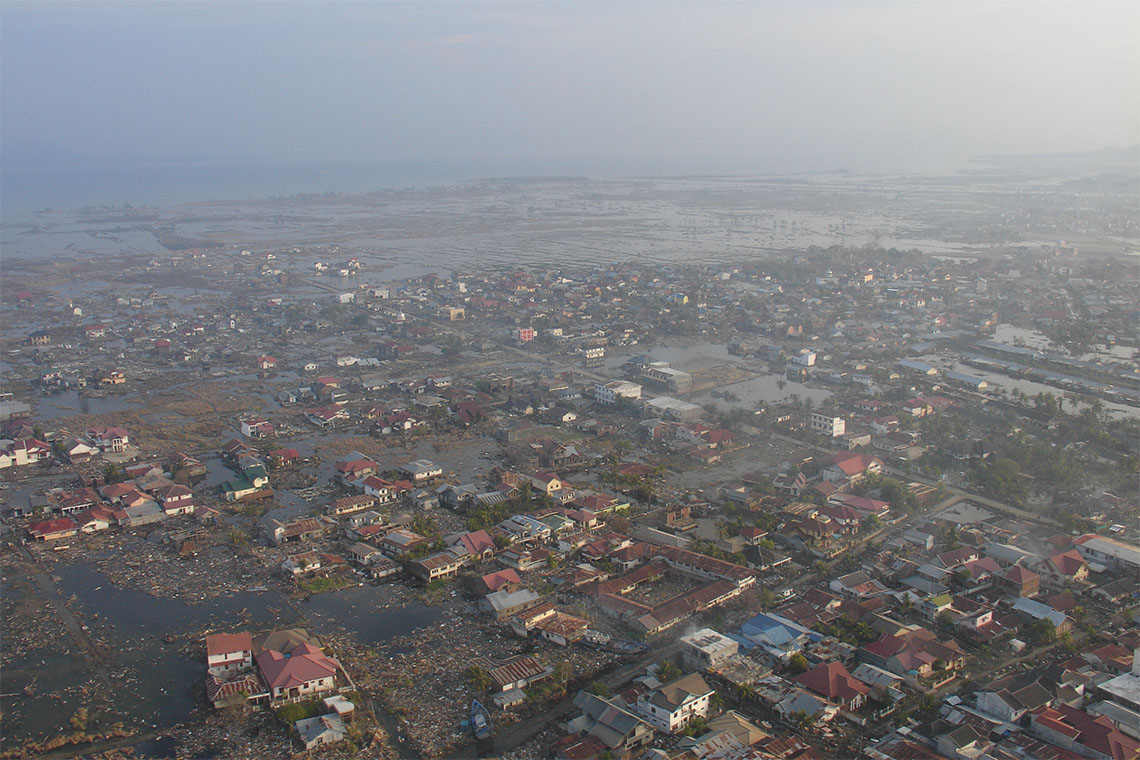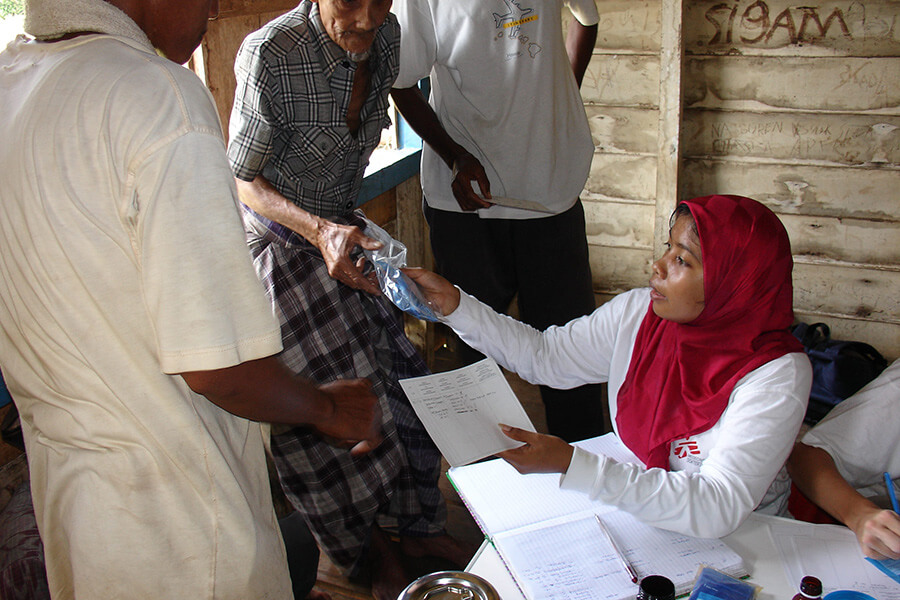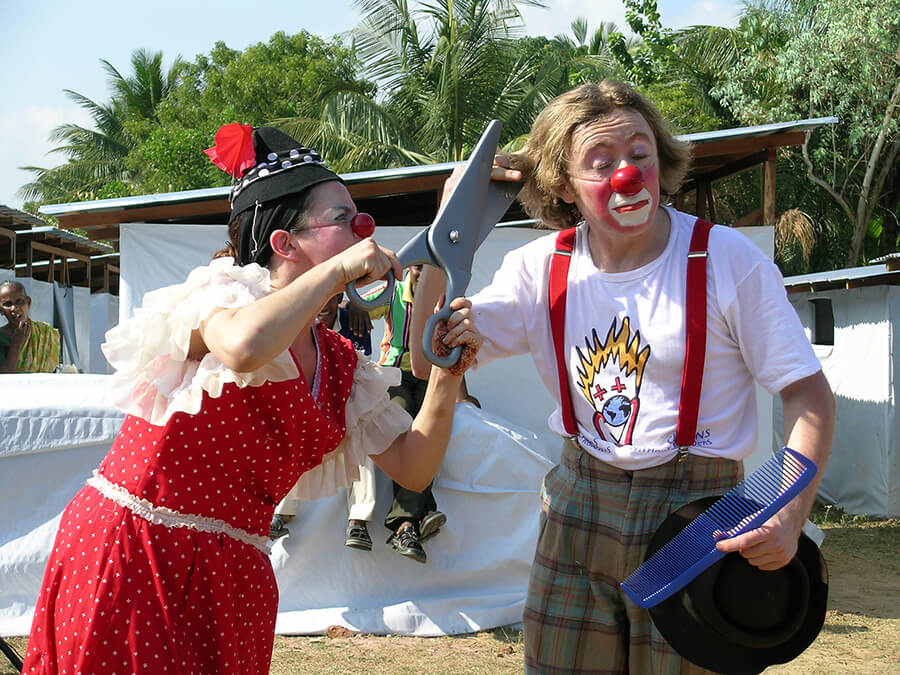Emergency Funding

2004
Banda Aceh in the northern Sumatra province of Indonesia after the tsunami. MSF was working in remote villages here, where vehicles could be used on the east coast but only helicopters could access the western coastline, the destruction has been so severe. (Photo credit: ©️MSF)

RESPONDING IN THE AFTERMATH OF THE INDIAN OCEAN TSUNAMI IN 2004
The 2004 Indian Ocean earthquake and tsunami had its epicentre off the west coast of northern Sumatra, Indonesia. It was an undersea megathrust earthquake with a massive reading of 9.1 on the Richter scale. The plates' movements caused a series of huge tsunami waves that grew up to 30 m (100 ft.) high once heading inland. Communities along the surrounding coasts of the Indian Ocean were severely affected, and the tsunami killed an estimated 227,898 people in 14 countries.
Within 72 hours after the tsunami, the first MSF teams arrived in the affected areas. After initial assessments of needs, MSF decided to mainly focus its relief efforts on northern Sumatra and the southern, eastern, and northern coastal areas of Sri Lanka, where the catastrophe resulted in a huge number of deaths, as well as massive material destruction.
Challenge: A surge of aid money beyond the needs

What was unusual, or at least unprecedented, in this disaster was the quantity of media coverage. And that soon translated into a surge of aid money.
In MSF headquarter offices, like Hong Kong, New York and Paris, the fundraising departments were organised to respond very quickly to the needs of the operational medical teams. And they were delighted by the speed and generosity of people from around the world who wanted to do something about the horrors that they had seen reported from the scene.

Banda Aceh in the northern Sumatra province after tsunami, MSF was working in remote villages along the coastline of Banda Aceh in the northern Sumatra province of Indonesia. This emergency action followed the December 26 2004 earthquake and tsunami that struck the Indian Ocean countries in the Bay of Bengal. (Photo credit: ©️MSF)

As the MSF teams on the ground became more aware of the extent of medical needs, and which ones MSF was best placed to meet, they now had an operational plan and a rough budget. It was immediately clear that MSF had more than enough money from emergency donations to cover the costs of what MSF should be doing.
Adaptation: Redirecting donation to other crises with donors' permission

In collaboration with Payasos Sin Fronteras (Clowns Without Borders), MSF organized performances and spectacles in camps and schools to help children and youngsters overcome the trauma. (Photo credit: ©️MSF)


The reaction from the rest of the aid community and the news media was not universally positive. There were complaints that MSF's decision would damage the overall effort to fund the emergency response and that it was somehow disrespectful to philanthropic instincts.
That damage did not really demonstrate itself. And MSF was always clear that there were huge needs for reconstruction and development that we were simply not qualified to meet and which certainly deserved funding.
By the end of 2005, MSF had used over US$ 29 million of the donations to fund its operations in the Tsunami region and US$ 78 million to meet urgent needs in other emergencies and forgotten crises such as the nutritional crisis in Niger, the conflict in Darfur and the earthquake in Pakistan.
Frontline Interview with Ewald Stals, the Operational Manager for Tsunami Response (EN): https://msf.hk/en/content/aceh-indonesia-two-years-after-tsunami











